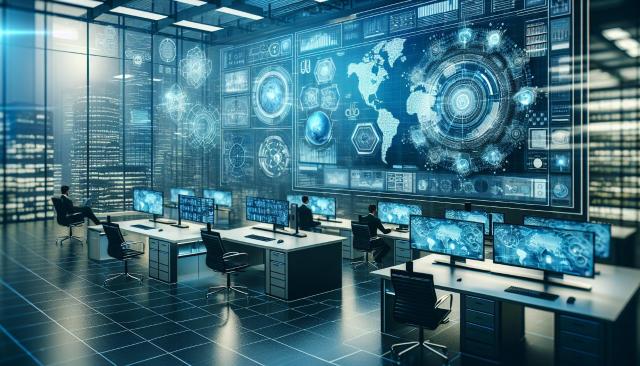The Symbiosis of Reality and Imagination: Advanced Development Services in Virtual and Augmented Realities
The convergence of reality and imagination has given rise to remarkable technological advancements, particularly in virtual reality (VR) and augmented reality (AR). These technologies, once a matter of science fiction, now offer diverse services that span industries and transform user experiences. VR and AR, through advanced development services, create immersive environments that redefine the boundaries of interaction, learning, entertainment and productivity.
Evolution and Impact
Virtual and augmented realities have evolved significantly over the past few decades. VR—which creates a completely artificial environment—and AR—which overlays digital content onto the real world—are now integral to multiple sectors. These technologies are powered by sophisticated software and hardware, including headsets, sensors and specialized virtual and augmented reality development platforms. The impact of VR and AR extends beyond mere novelty, influencing areas such as healthcare, education, retail and remote work.
Healthcare Innovations
In healthcare, VR and AR have revolutionized training, treatment and patient care. VR simulations offer medical students and professionals a risk-free environment to practice surgeries and procedures, enhancing their skills without endangering patients. AR, on the other hand, assists surgeons by overlaying critical information during operations, improving precision and outcomes. Pain management and mental health therapies have also benefited from VR, providing immersive experiences that distract patients from pain and anxiety.
Transforming Education
Education is another sector experiencing a transformation due to VR and AR. These technologies facilitate experiential learning, allowing students to explore historical events, complex scientific concepts and far-off places without leaving the classroom. For example, VR can simulate a walk through ancient Rome, providing an engaging history lesson, while AR can bring textbook diagrams to life, making abstract concepts tangible. Such immersive learning experiences enhance comprehension and retention, making education more effective and enjoyable.
Enhancing Retail Experiences
In retail, VR and AR enhance customer engagement and streamline the shopping experience. Virtual try-ons and fitting rooms enable customers to see how clothes, accessories or even furniture will look before making a purchase. AR apps allow users to visualize products in their real-world context, such as seeing how a new sofa would fit in their living room. These applications reduce the uncertainty of online shopping, increase customer satisfaction and decrease return rates.
Revolutionizing Remote Work
The rise of remote work has accelerated the adoption of VR and AR in creating collaborative and interactive virtual workspaces. These technologies enable team members to interact in a shared virtual environment, fostering a sense of presence and teamwork that traditional video conferencing lacks. VR platforms host virtual meetings, training sessions and team-building activities, making remote work more engaging and efficient. AR tools, meanwhile, provide real-time assistance and visualization for complex tasks, bridging the gap between remote and on-site work.
Entertainment and Beyond
Entertainment remains a cornerstone of VR and AR applications. VR gaming offers immersive experiences that transport players to fantastical worlds while AR enhances mobile gaming by integrating digital elements into the physical environment. Beyond gaming, these technologies are used in film, art and live events to create interactive and memorable experiences for audiences. The entertainment industry's adoption of VR and AR highlights the boundless creative potential of these technologies.
Advanced Development Services
The creation and implementation of VR and AR applications rely on advanced development services which encompass a range of technical and creative expertise. These services include software development, 3D modeling, animation, user interface design and integration with existing systems. Developers use specialized platforms and tools, such as Unity, Unreal Engine and ARKit to build and optimize VR and AR applications. Additionally, collaboration between developers, designers and industry experts ensures that applications are user-friendly, functional and aligned with industry needs.
Challenges and Future Directions
Despite their potential, VR and AR face challenges that need addressing to achieve widespread adoption. High development costs, technical limitations and user experience issues, such as motion sickness, are significant hurdles. However, ongoing research and innovation are gradually overcoming these barriers. The future of VR and AR promises more accessible, affordable and sophisticated applications that will further integrate into everyday life.

